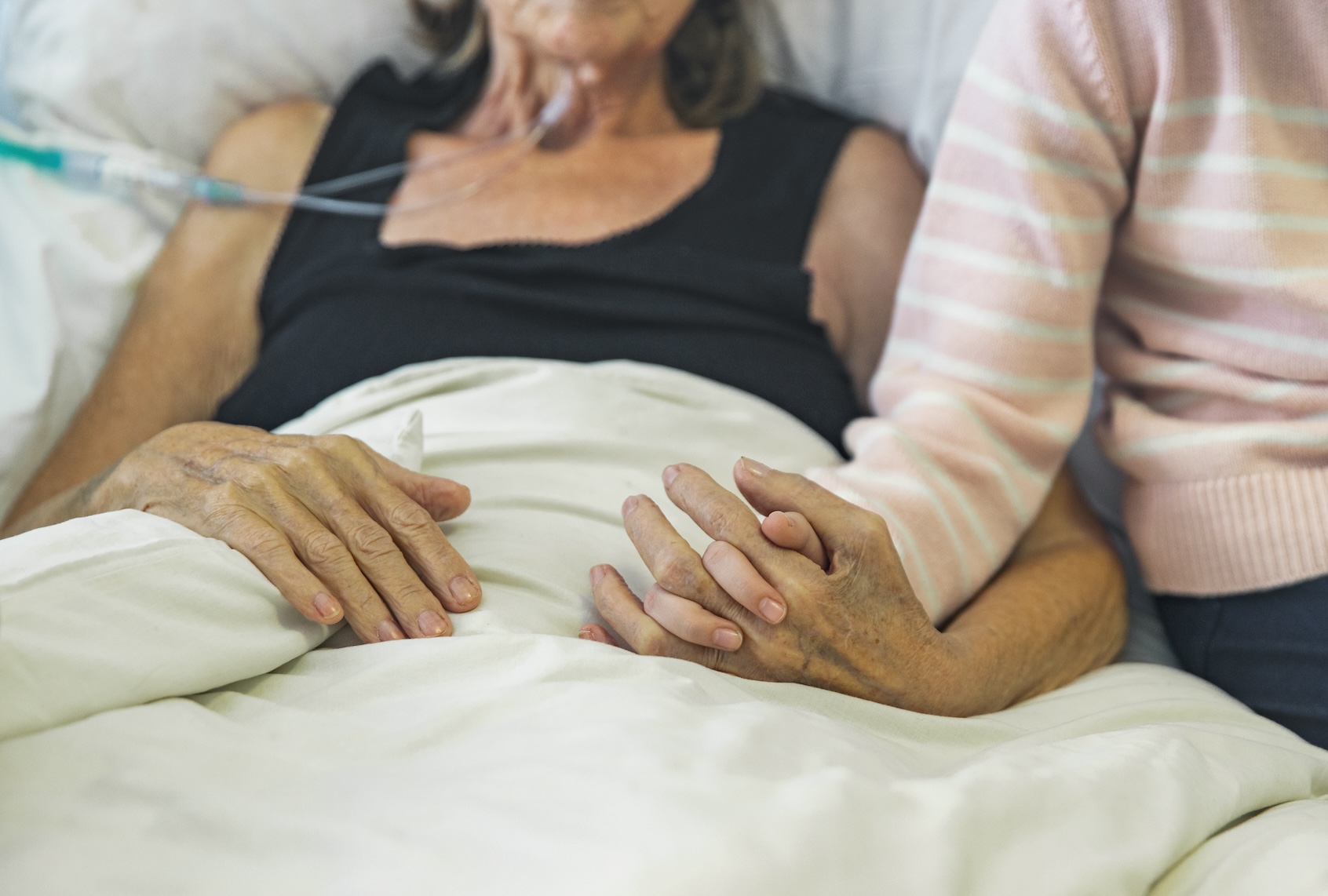President Trump’s “big beautiful bill,” which passed the House with almost unanimous Republican support on May 22, mandates $500 billion in cuts to Medicare. This is a cruel assault on some of the most vulnerable Americans that will strip them of vital health care services. It will also take an axe to hospice, which relies on Medicare reimbursement to function. Since 1982, when Medicare first began covering hospice, Americans have turned to it for essential end-of-life services that address the specialized needs of the dying and allow for death with dignity.
Our current system doesn’t always run perfectly and would benefit from greater funding and support. I know this because when my mother was 99.5 years of age and less than six months away from her death, medical staff at our local hospice agency determined she was not, in fact, dying soon enough. Presumably adhering to Medicare guidelines, they callously discontinued our hospice services. The abrupt cessation of care prompted my debilitated mom’s eviction from an assisted living facility. The chaotic aftermath necessitated medicine, schedule and equipment adjustments for her and delivered a massive blow to me, her primary caregiver.
Fewer resources means this financially draining and emotionally wrenching situation will become more common — perhaps even the norm. The shifting demographics make the picture even bleaker. The U.S. is a rapidly aging population, with the number of Americans ages 65 and older expected to more than double over the next 40 years. At a time when we should be buttressing hospice services, our government is threatening to starve them.
According to the Office of the Inspector General, “About 1.7 million Medicare beneficiaries receive hospice care each year, and Medicare pays about $23 billion annually for this care.” Hospice is an interdisciplinary service that provides everything from pain relief to spiritual support to medication management to dietary consulting to mobility equipment to bereavement counseling. While the price tag may sound hefty and our current administration would like us to believe that public services are an unbearable financial burden, an investigation published in the Journal of American Medical Association Health Forum found that hospice saves Medicare money.
At a time when we should be buttressing hospice services, our government is threatening to starve them.
Research shows that hospice significantly benefits dementia and cancer patients at the end of their lives. On May 19, 2025, the Journal of the American Geriatrics Society published a study of 51,300 assisted living residents that concluded, “Higher frequency of hospice staff visits was associated with better perceived hospice quality. Policies supporting greater hospice staff engagement, including nonclinical staff, may enhance end-of-life care experiences for assisted living residents.” The report matters because the findings illuminate the humane need for both clinical and nonclinical treatment that provides for medical and emotional support as life ends.
We all heard President Trump campaign on promises to protect Medicare, but Richard Fiesta, executive director of the advocacy group Alliance for Retired Americans, describes the ongoing national budget scene as “an all-out assault on Medicare and Medicaid that will hurt older Americans in every community across the country.” And Shannon Benton, the executive director of the Senior Citizens League, another advocacy group, now warns that the potential Medicare cuts could lead to lower reimbursement rates. This would be disastrous for millions of Americans and would threaten to eradicate end-of-life care as we know it.
Want more health and science stories in your inbox? Subscribe to Salon's weekly newsletter Lab Notes.
Despite common belief, hospices are not run by volunteers. Volunteers might become part-time visitors or assistants for a variety of tasks, but hospice administrations are led by professionals who are evaluated on financial performance and organizational viability. Palliative care is free to recipients and families and available at all income levels, but hospices are businesses, and they must raise sufficient funds through donations, gifts, bequests and reimbursements to compensate employees, repay loans, cover operating costs, and plan for exigencies. Simply put, much of that money comes from Medicare.
Specialized care for the dying was introduced to the U.S. in 1963, when Yale University’s then dean Florence Wald invited Dame Cicely Saunders of the U.K. to participate in a visiting lecture at Yale. At that time Saunders said, “We will do all we can not only to help you die peacefully, but also to live until you die.” Four years later, in 1967, Saunders created St. Christopher’s Hospice in the U.K. Later, in 1974, Florence Wald founded Connecticut Hospice in Branford, Connecticut — America’s first hospice.
We need your help to stay independent
Within five years and after several national conferences, the U.S. Department of Health, Education and Welfare acknowledged that hospices provided alternative care programs for Americans losing their lives to terminal illnesses. Federal hospice regulations were drafted. In 1982, Medicare added hospice care to its benefits, and in 1985, Medicare hospice coverage became permanent. With that, the U.S. recognized the right of its citizens to die with dignity. Forty years later, our government has signaled that a rollback of that right may be on the horizon.
Eventually, my mother died in a highly regarded long-term care complex without hospice support and with no prescribed opioids. It was an unnecessarily excruciating death that exacerbated my and my family’s grief. The trauma we suffered was destabilizing and healing from it was slow and difficult. If Trump’s Orwellian-named “big beautiful bill” passes the Senate, I fear our experience will have been an ugly preview of what is to come.

